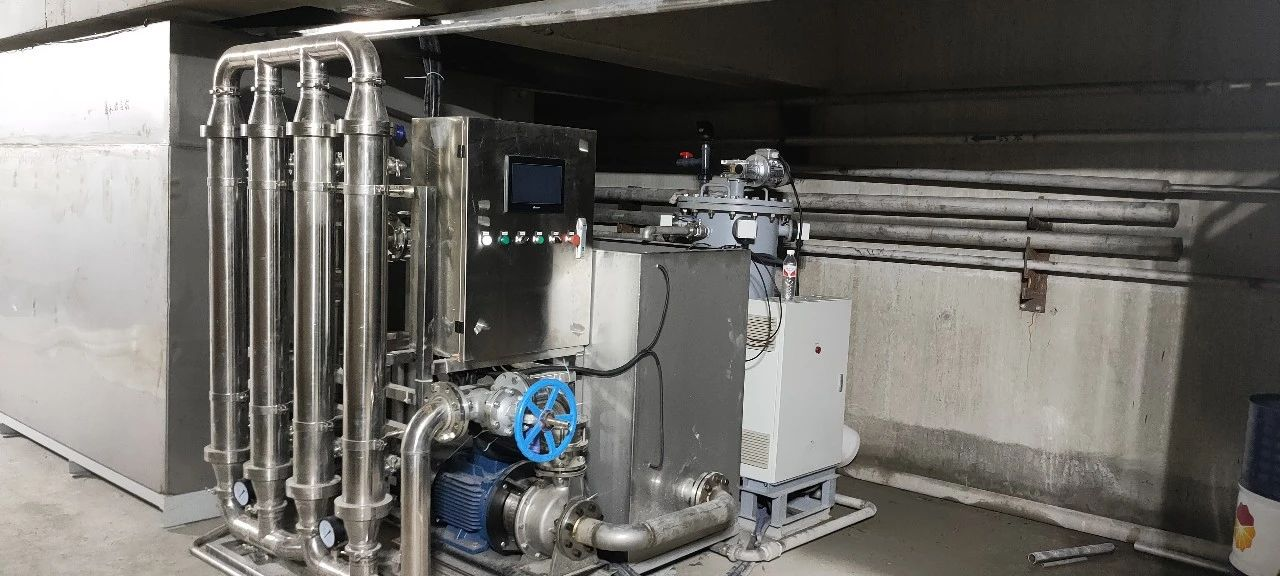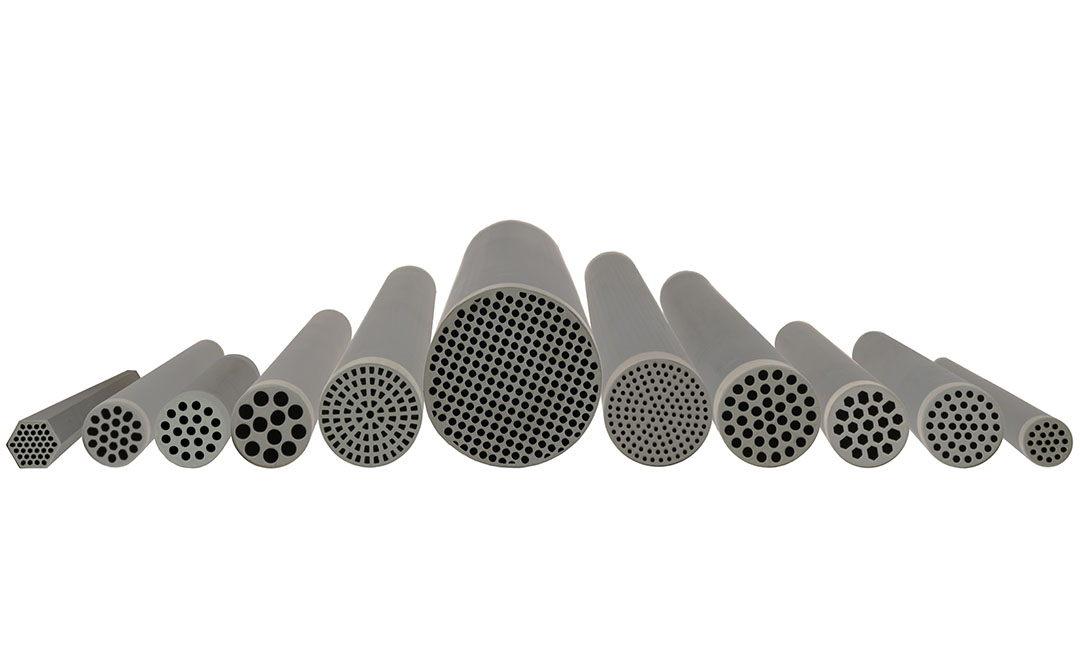Enhanced Longevity of Tubular SiC Membrane Systems
The enhanced longevity of tubular silicon carbide (SiC) membrane systems is a pivotal factor in minimizing downtime in various industrial applications. These advanced filtration systems are increasingly recognized for their durability and resilience, which stem from the inherent properties of silicon carbide itself. Unlike traditional membrane materials, SiC exhibits exceptional thermal and chemical stability, allowing it to withstand harsh operating conditions without significant degradation. This characteristic is particularly beneficial in industries such as wastewater treatment, food and beverage processing, and petrochemicals, where membranes are often exposed to corrosive substances and extreme temperatures.
Moreover, the structural integrity of tubular SiC membranes contributes significantly to their longevity. The tubular design not only enhances the flow dynamics but also reduces the likelihood of fouling, a common issue that plagues many membrane systems. Fouling occurs when particles accumulate on the membrane surface, leading to reduced efficiency and increased maintenance requirements. However, the smooth surface of SiC membranes, combined with their hydrophilic properties, facilitates easier cleaning and minimizes the buildup of contaminants. Consequently, operators can expect longer operational periods between maintenance interventions, thereby reducing downtime and associated costs.
In addition to their resistance to fouling, tubular SiC membranes are also less prone to physical damage compared to their polymer counterparts. The robust nature of silicon carbide allows these membranes to endure mechanical stresses that would typically compromise other materials. This resilience is particularly advantageous in applications involving high-pressure operations, where the risk of membrane rupture is heightened. By maintaining structural integrity under such conditions, tubular SiC membranes ensure continuous operation, further contributing to the overall efficiency of the system.
Furthermore, the longevity of these membrane systems is enhanced by their ability to operate effectively across a wide range of pH levels and temperatures. This versatility means that industries can utilize tubular SiC membranes in various processes without the need for frequent replacements or adjustments. As a result, companies can streamline their operations, focusing on productivity rather than the constant upkeep of filtration systems. This adaptability not only extends the lifespan of the membranes but also allows for greater flexibility in process design, enabling industries to respond swiftly to changing demands.
Another critical aspect of the enhanced longevity of tubular SiC membrane systems is their lower energy consumption compared to traditional filtration methods. The efficient design and material properties of SiC membranes facilitate lower transmembrane pressure requirements, which translates to reduced energy costs. This energy efficiency not only contributes to the sustainability of operations but also minimizes the wear and tear on associated equipment, further extending the lifespan of the entire system.

In conclusion, the enhanced longevity of tubular silicon carbide membrane systems plays a crucial role in minimizing downtime across various industrial applications. Their resistance to fouling, physical damage, and chemical degradation, combined with their operational versatility and energy efficiency, positions them as a superior choice for filtration needs. As industries continue to seek ways to optimize performance and reduce operational interruptions, the adoption of durable tubular SiC membrane systems will undoubtedly become increasingly prevalent, paving the way for more reliable and efficient processes.
Efficient Maintenance Strategies for Reduced Downtime
In the realm of industrial processes, minimizing downtime is a critical objective that directly impacts productivity and operational efficiency. One of the most effective ways to achieve this goal is through the implementation of durable tubular silicon carbide (SiC) membrane systems. These advanced filtration technologies not only enhance performance but also facilitate efficient maintenance strategies that significantly reduce the likelihood of operational interruptions. By understanding the intricacies of these systems and their maintenance requirements, organizations can optimize their processes and ensure continuous operation.
To begin with, the inherent properties of tubular SiC membranes contribute to their durability and reliability. Silicon carbide is known for its exceptional mechanical strength, chemical resistance, and thermal stability. These characteristics make SiC membranes particularly suitable for demanding applications, such as wastewater treatment and industrial filtration. Consequently, the longevity of these membranes reduces the frequency of replacements, which is a common source of downtime in traditional filtration systems. By investing in durable materials, organizations can minimize the disruptions associated with routine maintenance and unexpected failures.
Moreover, the design of tubular SiC membrane systems allows for easier access during maintenance procedures. Unlike flat-sheet membranes, which can be cumbersome to clean and replace, tubular membranes are typically housed in modular units that can be serviced individually. This modularity not only simplifies maintenance tasks but also enables operators to perform inspections and repairs without taking the entire system offline. As a result, organizations can schedule maintenance during non-peak hours or implement a rolling maintenance strategy, thereby further reducing the impact on overall operations.
In addition to the physical design advantages, the operational efficiency of tubular SiC membranes can be enhanced through proactive maintenance strategies. Regular monitoring of system performance is essential for identifying potential issues before they escalate into significant problems. By employing advanced sensors and data analytics, operators can track key performance indicators such as flow rates, pressure differentials, and membrane fouling levels. This real-time data allows for timely interventions, ensuring that any necessary maintenance is conducted before it leads to system failure. Consequently, organizations can maintain optimal performance levels while minimizing the risk of unplanned downtime.
Furthermore, training personnel in best practices for maintaining tubular SiC membrane systems is crucial for ensuring their longevity and reliability. Well-trained staff can quickly identify signs of wear or fouling and implement appropriate cleaning protocols. For instance, backwashing and chemical cleaning can be performed as needed to restore membrane performance without requiring extensive downtime. By fostering a culture of proactive maintenance and equipping staff with the necessary skills, organizations can create a resilient operational environment that is less susceptible to interruptions.
In conclusion, the integration of durable tubular SiC membrane systems into industrial processes presents a significant opportunity to minimize downtime through efficient maintenance strategies. The inherent strength and modular design of these membranes facilitate easier access for maintenance, while proactive monitoring and staff training further enhance operational reliability. By prioritizing these strategies, organizations can not only improve their filtration processes but also ensure that their operations remain uninterrupted, ultimately leading to increased productivity and profitability. As industries continue to evolve, the adoption of advanced technologies like tubular SiC membranes will play a pivotal role in shaping the future of efficient and sustainable operations.
Real-World Case Studies: Success Stories of SiC Membrane Applications
In recent years, the adoption of durable tubular silicon carbide (SiC) membrane systems has gained significant traction across various industries, particularly in water treatment and industrial processes. These systems have demonstrated remarkable efficiency and reliability, leading to a series of successful applications that highlight their potential to minimize downtime. Real-world case studies provide compelling evidence of how SiC membranes can transform operational efficiency and enhance productivity.

One notable example can be found in the municipal water treatment sector, where a city faced persistent challenges with its aging filtration systems. The existing membranes were prone to fouling and required frequent maintenance, resulting in significant downtime and increased operational costs. In response, the city implemented a tubular SiC membrane system designed to withstand harsh conditions and resist fouling. The results were transformative; the new system not only reduced maintenance frequency but also improved water quality. By minimizing downtime associated with cleaning and replacement, the city was able to allocate resources more effectively, ultimately leading to enhanced service delivery for its residents.
Similarly, in the food and beverage industry, a major dairy processing plant sought to optimize its whey protein recovery process. The traditional filtration methods employed were labor-intensive and often led to production halts due to membrane clogging. By integrating a tubular SiC membrane system, the plant experienced a significant reduction in downtime. The robust nature of SiC membranes allowed for continuous operation, even under challenging conditions. This transition not only streamlined the production process but also increased the yield of high-quality whey protein, demonstrating how durable membrane technology can drive both efficiency and profitability.
In another instance, a petrochemical facility faced operational inefficiencies due to the frequent replacement of polymeric membranes used in wastewater treatment. These membranes were susceptible to chemical degradation and fouling, leading to unplanned shutdowns. The facility decided to switch to a tubular SiC membrane system, which is inherently resistant to a wide range of chemicals and offers superior mechanical strength. The implementation of this technology resulted in a dramatic decrease in downtime, as the SiC membranes maintained their integrity and performance over extended periods. Consequently, the facility not only improved its operational reliability but also reduced its overall maintenance costs, showcasing the long-term economic benefits of investing in durable membrane systems.
Moreover, in the pharmaceutical industry, where stringent regulatory standards dictate the need for high-quality water, a manufacturing plant encountered challenges with its existing filtration systems. The frequent need for cleaning and replacement of membranes led to production delays and compliance risks. By adopting a tubular SiC membrane system, the plant achieved a significant reduction in downtime associated with maintenance. The enhanced durability and fouling resistance of SiC membranes ensured consistent water quality, allowing the facility to meet regulatory requirements without interruption. This case underscores the critical role that durable membrane technology plays in maintaining operational continuity in highly regulated environments.
In conclusion, these real-world case studies illustrate the profound impact that durable tubular SiC membrane systems can have on minimizing downtime across various sectors. By addressing the challenges associated with traditional filtration methods, these advanced systems not only enhance operational efficiency but also contribute to significant cost savings and improved product quality. As industries continue to seek innovative solutions to optimize their processes, the success stories of SiC membrane applications serve as a testament to the transformative potential of this technology.

